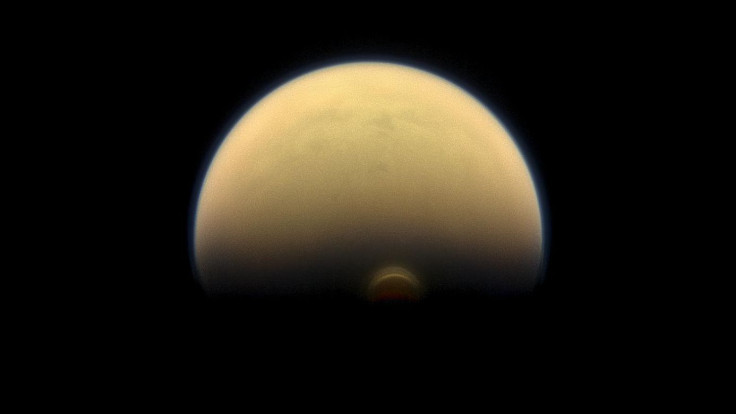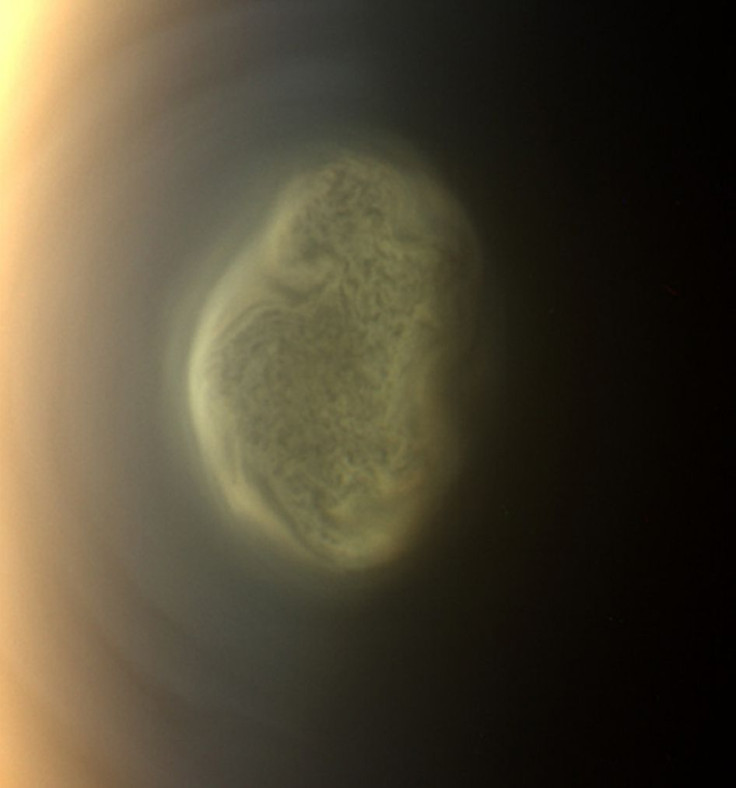NASA’s Cassini Spies Winter Approaching Titan’s Southern Hemisphere

In the hunt for alien life within the confines of our solar system, Titan is a prime target. Previous research has suggested that Saturn’s largest moon’s frigid, liquid methane-soaked landscape could have given rise to, and may support, methane-based, oxygen-free cells that metabolize, reproduce and do everything else life on Earth does.
Now, fresh observations conducted by NASA’s Cassini spacecraft — currently in orbit around Saturn — have revealed the moon’s tumultuous weather. The data shows that winter is beginning to take a grip on the moon’s southern hemisphere, and a vortex rich in trace gases that accumulate in the absence of ultraviolet light is developing in the upper atmosphere over the south pole.

“Cassini's long mission and frequent visits to Titan have allowed us to observe the pattern of seasonal changes on Titan, in exquisite detail, for the first time,” Athena Coustenis, a member of Cassini's Composite Infrared Spectrometer team at the Observatoire de Paris, said in a statement released Thursday. “We arrived at the northern mid-winter and have now had the opportunity to monitor Titan's atmospheric response through two full seasons.”
On Titan, heat is circulated through a nitrogen and methane rich atmosphere via a pole-to-pole cycle originating from the warmer pole — which was the South Pole when Cassini arrived at Saturn in 2004. Since Titan’s equinox of 2009, this has reversed, and, as a result, warm gases are now upwelling at the North Pole and cold gases can be seen subsiding at the southern end.
“Titan's hemispheres have responded in different ways to these seasonal changes. The wintry effects have led to a temperature drop of 72 degrees Farenheit (40 degrees Celsius) in the southern polar stratosphere over the last four years,” NASA explained in the statement. “This contrasts with a much more gradual warming in the northern hemisphere, where temperatures remained stable during the early spring and have shown just a six-degree increase since 2014.”
© Copyright IBTimes 2024. All rights reserved.






















